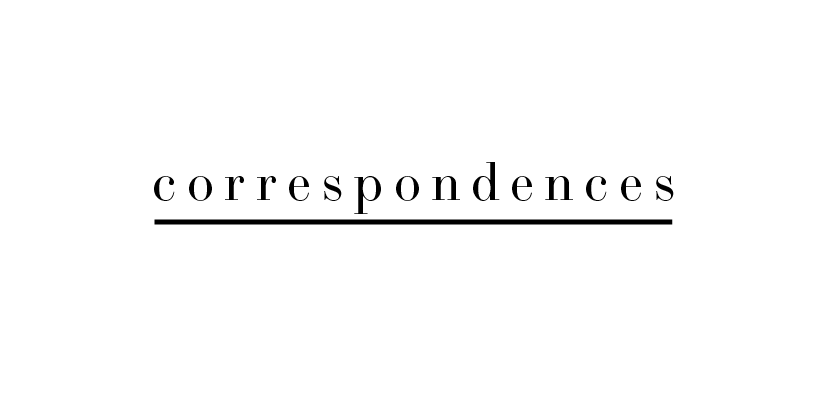Succour for the Spirit – Issue 13
Sunday Reading with painter
Kuang Zai
Talking about painting and the search for calmness, listening to Billie Eilish, ‘Thinking about Immortality and Kindness’, and more.
#SuccourfortheSpirit #SilentDialogueEvents
Photograph of Kuang Zai
“My works aim to capture the familiarity of everyday objects and their relationships. I hope to evoke a sense of simplicity and purity in relation to these objects, not only capturing the shape, form, colour and texture but also showcasing the dignity of the object and emphasising the space surrounding it. ”
In Conversation
with Kuang Zai (KZ) & correspondences’ Emma Thomson (ET).
Nature, food or art?
Art
Why were you drawn to becoming a painter?
Basic Food #1, 2018, oil on canvas, 30 x 30 cm Private collection © Kuang Zai
KZ—I was drawn to painting because I love the emotional effects of colour. In my paintings, I use harmonious colours that appear muted, to evoke a sense of calmness. The process of painting with colours, in search of this calmness, creates many layers. These layers are not necessarily intentional, but rather a natural outcome of the painting process and creative expression that makes me feel very relaxed and at ease with life.
After painting, what is your favourite art form?
Basic Food #15, 2018, oil on canvas, 60 x 60cm, Private collection © Kuang Zai
KZ—I also really like sculpture because of the weight and power associated with the art form. I like the work of Giacometti and Henry Moore. In his sculptures, Giacometti condenses the space around the figure. The relationship between the space and figure is also a central focus of my work, where typically one figure or object dominates the painting, whether in motion or a fixed position. Henry Moore uses the "holes" or the negative space around his works to create a sense of cohesion and unity in his works, which is the primary method for achieving a sense of calmness and tranquillity within my works.
ET—Listen to a short, fascinating video (3:56 mins) about Giacometti presented by curator and Director of Tate Modern, Frances Morris below.
Do you think art is therapeutic?
Girl standing, 2017, oil on paper on board, 29.7 x 21 cm Artist’s studio © Kuang Zai Price on application
KZ—Having taught children, young people and adults in China and Australia for the past 20 years, I can certainly see the therapeutic side of art. The art-making and viewing experience presents the opportunity to alleviate and mediate tensions in our everyday lives. It is not just the finished artwork, but also the process of creating art —experimenting with colours, shapes and textures — that is deeply gratifying, calming and satisfying. As a practising artist, I believe that working in solitude allows for ideas to be more refined. However, the art classroom is also a generative space for conversations where ideas can be shared and evolved as a group.
ET— Girl standing 2017 (pictured at left) is for sale for a short time. All proceeds will go directly to the artist.
What are you listening to?
KZ— Lately, I have been listening to Billie Eilish and Sasha Sloan. I find their soft, lyrical styles very calming to listen to while I am working in the studio.
ET—Listen in below to Billie’s ‘When I Was Older’ which was inspired by the film Roma. If you haven’t seen this Oscar winning film directed by Alfonso Cuarón, do check it out. It is brilliant.
Tell us about one of your creations
ET—Audrey 2017 (below) is an intriguing work. On the one hand, it is a mundane, everyday scene of a child before bedtime, who seems to be begging her parents to let her stay awake! It is a familiar scene for parents the world over and a nostalgic reminder of childhood. On the other hand, as an onlooker, it is a scene that is full of mystery —the sense of the unknowable, inner world of that particular girl and her childhood.
Zai, how do you try to capture this sense of mystery in paint? For instance, I think the shadow effect under the bed is very effective in the cultivation of this mood, especially when felt in contrast with the light which floods the room — albeit temporarily — before lights out! Can you elaborate?
KZ—Yes. I agree. Along with the light source, I think the way in which the figure commands the space is central to her positioning at the centre of this sense of mystery. Together, these features allow the figure to ‘pull through’ the space around it, whilst simultaneously harmonising the figure with her surrounding environment. Whilst deceptively simple, the muted colours allow the viewer to focus upon these spatial elements which bring the psychological complexity to the way we see Audrey interacting with her space at the centre of her world.
What were you striving to explore?
KZ—I wish to connect the chaotic outside environment and simple internal space within my works. The messy elements in the work, such as the un-tucked blanket and the shirt which lays crumpled on the floor, seemingly constrain Audrey within her sleeping routine. The loneliness experienced by the child and the thoughts she holds when alone, connects with the narrow format and colour palette of the work in creating elements of tension.
ET—The winner of the 2017 Calleen Art Award, Audrey 2017 is now part of the Cowra Regional Art Gallery collection. To read more about the artwork and Zai’s selection as the 2017 recipient of the award, head to Cowra Regional Art Gallery’s website.
What are you working on now?
KZ—I am currently working on compositions which explore the relationship between figures for Silent Dialogue, but also the spaces around them and the methods of interaction with colour. These relationships may include relationships between siblings, family or individuals and their thoughts. You can see more of my work on my Instagram page @zaikuangartist.
ET—Zai has recently also been working with us on a special project called ‘Thinking about Immortality and Kindness’. Featuring leading creatives of Asian-Australian cultural heritage, the project examines the issue of escalating racism in the wake of COVID-19 through the themes of immortality and kindness. Find out more at the viewing room via the button below.
What else can supporters do?
Pre-purchase our book for Silent Dialogue. Featuring ten other original pieces of writing by some of the country's finest writers alongside beautiful imagery from our participating visual artists, it is going to be special. Purchase before 31/10 and you will be invited to join us for the exhibition launch next year.
Biography
Born in China, exhibiting artist and speaker Kuang Zai holds a Masters degree in Fine Art from the Academy of Art and Design at Tsinghua University (China), as well as a Masters degree from Monash University in Australia. Since arriving in Australia in 1998, his work has been presented in over 15 solo and 44 group exhibitions. He has been the recipient of numerous art prizes and a finalist in the Archibald Prize (2007, 2008), the Doug Moran National Portrait Prize (2007, 2009, 2010), the Sulman Prize (2012), the Fleurieu Art Prize (2008, 2011) and the Albany Art Prize (2008, 2010, 2011 and 2012), to name but a small few. His works are held in various public and corporate collections including the Cowra Regional Art Gallery, BHP Billiton, Monash University, Macquarie University, as well as various private collections internationally.
Image credit (banner): Food, 2020, oil on paper on board, 21 x 29 cm Artist’s studio © Kuang Zai









